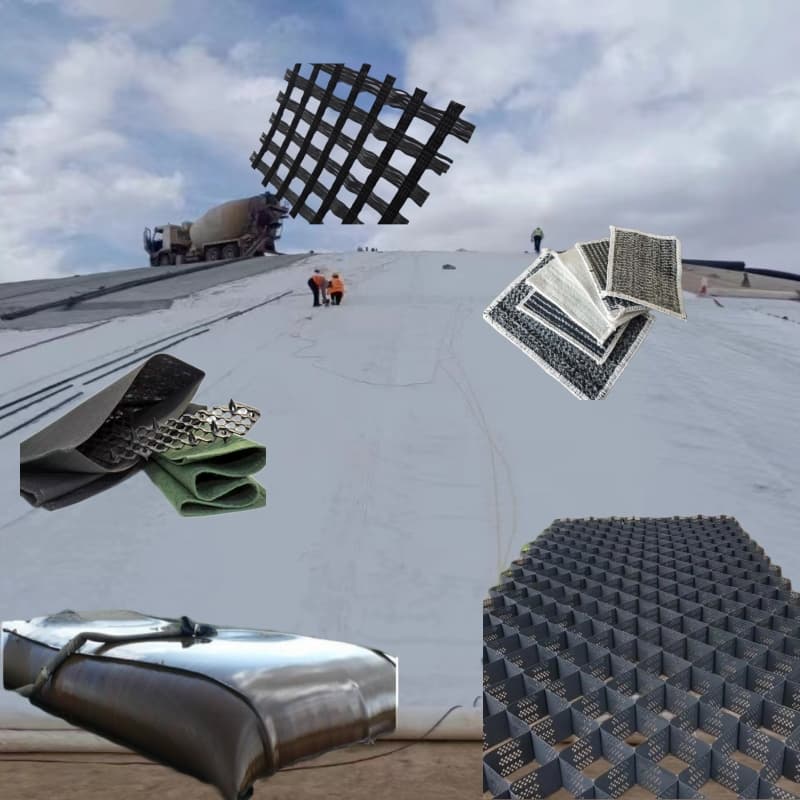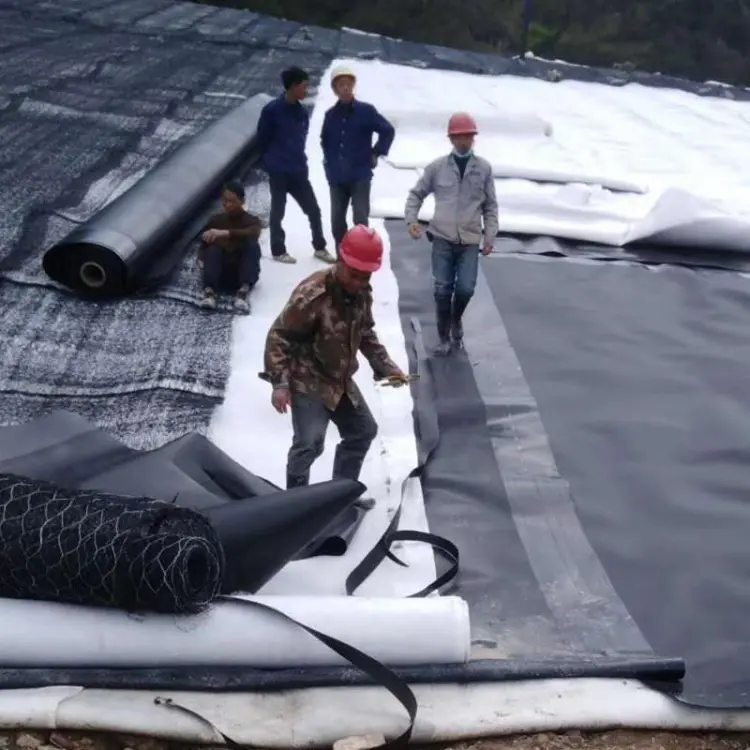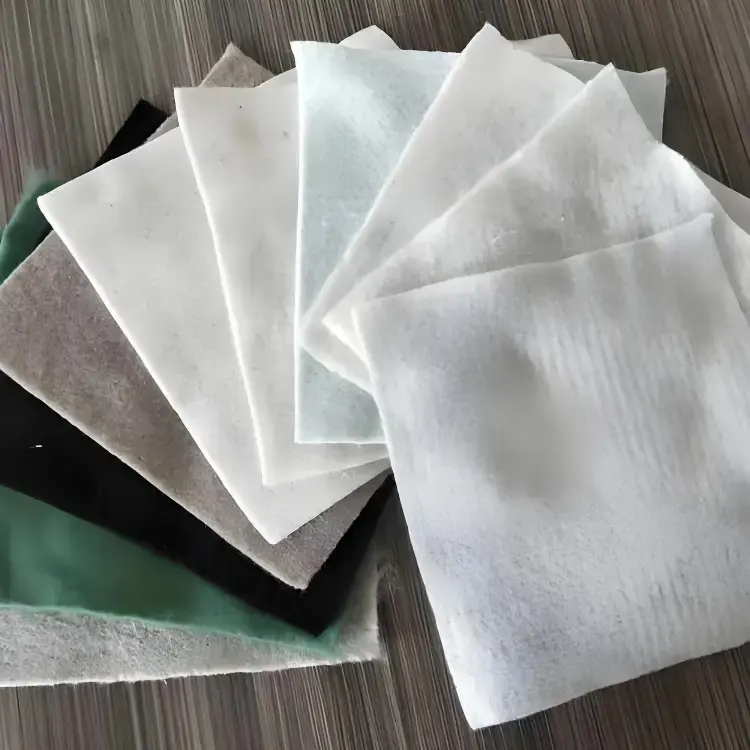Geosynthetics are a class of polymer materials used in civil engineering, widely applied in modern civil engineering projects due to their unique physical and mechanical properties. These materials not only enhance project stability and durability but also effectively reduce engineering costs and environmental impacts. The following sections detail the main types, applications, and advantages of geosynthetics.
I. Main Types of Geosynthetics
(A) Geotextiles
Features: Geotextiles exhibit excellent filtration, drainage, separation, and reinforcement functions. Based on production processes, they are categorized into woven geotextiles and non-woven geotextiles.
Applications: Widely used for reinforcement and protection in roads, dams, railways, airports, and other projects to prevent soil erosion and sediment loss effectively.
Advantages: High permeability and shear strength capabilities enable efficient load distribution and reduction of soil deformation.
(B) Geomembranes
Features: Geomembranes have extremely low permeability coefficients, effectively preventing liquid leakage. Common materials include high-density polyethylene (HDPE) and polyvinyl chloride (PVC).
Applications: Extensively applied in impermeability projects such as landfill sites, wastewater treatment plants, and tailings ponds to block contaminants from infiltrating soil and groundwater.
Advantages: High chemical stability, strong corrosion resistance, and long service life.
(C) Geogrids
Features: Geogrids form high-strength grid structures through directional alignment of polymers, efficiently transferring and dispersing stress.
Applications: Commonly used for reinforcement in roads, dams, and railways to significantly improve foundation bearing capacity and stability.
Advantages: High tensile strength, low elongation rate, and convenient construction.
(D) Geotubes
Features: Geotubes are made from high-strength synthetic materials, offering excellent filtration performance and puncture resistance.
Applications: Widely employed in coastal protection, sediment containment, and sludge dewatering projects to prevent sediment loss and seawater erosion effectively.
Advantages: Rapid construction speed, low cost, and strong environmental performance.
(E) Geonets
Features: Geonets are manufactured from polymers, providing good flexibility and tensile strength.
Applications: Extensively used in slope protection and vegetation restoration projects to effectively mitigate soil erosion and landslides.
Advantages: Easy construction and adaptability to complex terrain conditions.

II. Main Applications of Geosynthetics
(A) Foundation Reinforcement
Geosynthetics significantly enhance the bearing capacity and stability of foundations. For example, geogrids utilize their high-strength grid structure to disperse loads efficiently and reduce soil deformation.
(B) Prevention of Soil Erosion
Geotextiles and geonets offer superior filtration and drainage functions, effectively preventing soil and water loss. For instance, in slope protection projects, geonets mitigate landslides and mudflows effectively.
(C) Impermeability Treatment
Geomembranes possess extremely low permeability coefficients, effectively preventing liquid leakage. For example, in landfill sites and wastewater treatment plants, they block contaminants from entering soil and groundwater.
(D) Sludge Dewatering
Geotubes efficiently achieve sludge dewatering and solidification. For instance, in sludge treatment projects, they combine physical filtration and pressure dewatering to significantly reduce sludge volume.
III. Advantages of Geosynthetics
(A) Enhanced Project Stability
Geosynthetics improve project stability and durability through high strength and low elongation properties. For example, geogrids reduce rutting and cracking in road reinforcement.
(B) Reduced Engineering Costs
Geosynthetics feature rapid construction and low material costs, substantially lowering total project expenses. For instance, geotubes enable fast, cost-effective sediment containment with strong environmental benefits.
(C) Excellent Environmental Performance
Geosynthetics demonstrate strong environmental performance by minimizing ecological impacts. For example, geomembranes prevent contaminant infiltration in landfill applications.
(D) Construction Convenience
Geosynthetics simplify construction processes with quick installation, shortening project cycles. For instance, geotextiles and geonets allow easy, rapid deployment in varied terrain.
IV. Summary
Geosynthetics are widely utilized in civil engineering due to their unique physical and mechanical properties. These materials enhance project stability and durability while reducing costs and environmental impacts. In practical projects, selection should consider specific engineering requirements, material performance, construction conditions, and budget constraints to identify the most suitable geosynthetic products.

